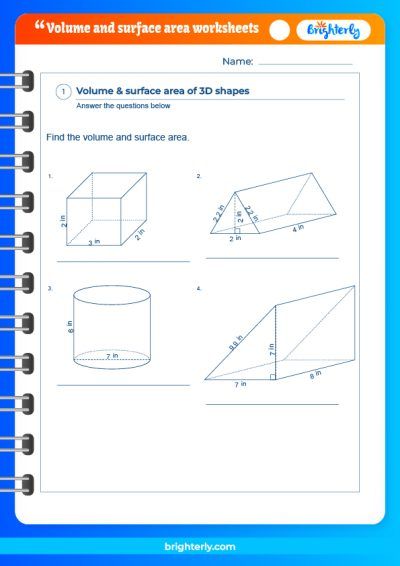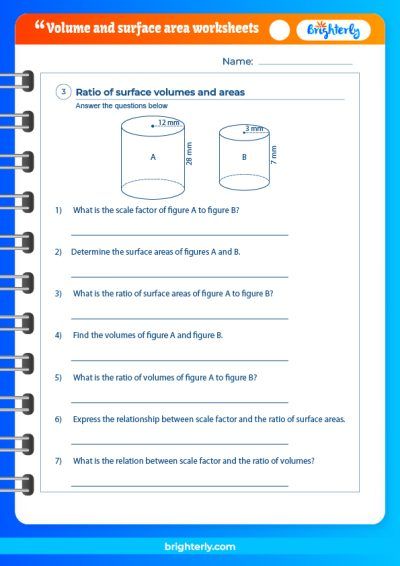Hexagonal Prism – Definition With Examples
Updated on January 10, 2024
Welcome to another thrilling journey through the vast, enchanting landscape of mathematics on Brighterly – where we simplify complex concepts and illuminate the path of knowledge for our young learners. In today’s adventure, we invite you to delve into the intriguing world of 3D shapes, more specifically, the hexagonal prism. This captivating geometric shape, with its unique features and properties, offers a perfect illustration of the harmonious blend of beauty and logic inherent in mathematics. Get ready to explore the definition, properties, and fascinating real-life examples of a hexagonal prism, as we simplify and demystify this mathematical concept.
What is a Prism?
Let’s journey into the fascinating world of geometry. In our exploration, we shall focus on the key concept of a prism. Derived from the Greek word ‘prisma’, meaning ‘something sawed’, a prism represents a polyhedron – a 3D shape with flat faces. Essentially, a prism is a geometric figure with identical ends (bases) and flat faces that connect those ends. The two bases are congruent, parallel polygons, and the other faces are rectangles or parallelograms. Prisms come in various shapes and sizes, like the commonly known rectangular prism or the more complex pentagonal prism. For today, though, our spotlight shines on the intriguing hexagonal prism.
What is a Hexagonal Prism?
Enter the fascinating domain of the hexagonal prism. As the name suggests, this figure is a prism with a hexagonal base. It belongs to the family of prisms, but sets itself apart with its six-sided polygonal bases. The remaining faces are rectangles, connecting each corresponding pair of vertices (corners) between the two bases. It can be a common sight in nature, for instance, the cells in a beehive. An example from the man-made world could be certain board game pieces or certain architectural structures.
Properties of a Hexagonal Prism
Now that we’ve got acquainted with the hexagonal prism, let’s understand its unique characteristics. The hexagonal prism, like other prisms, has properties that are consistent within the prism family. However, it distinguishes itself with its number of faces, edges, and vertices due to the hexagonal bases. The prism is six-sided, and it has a set of properties that make it unique, including its surface area and volume. Additionally, its symmetry and structure hold certain mathematical truths that we will explore later on.
Hexagonal Prism 3D Shape
To better appreciate its beauty, let’s visualize the hexagonal prism 3D shape. Imagine two hexagons, parallel and identical, hovering in space. They are connected by six rectangles, each of which aligns with a side of the hexagons. The result is a hexagonal prism: a beautiful, symmetrical 3D figure that is as interesting to study as it is to behold.
Hexagonal Prism – Faces, Edges and Vertices
The hexagonal prism, due to its unique structure, has 8 faces, 18 edges, and 12 vertices. This comes from the two hexagonal faces (each with six edges and six vertices) and the six rectangular faces (each contributing two edges). The intersections of these edges give us the vertices. Exploring these basic components gives us a profound understanding of the overall structure of the hexagonal prism.
Net of a Hexagonal Prism
A net of a hexagonal prism is a 2D representation that can be folded to form the 3D shape of the prism. Picture this: two hexagons with six rectangles radiating out from the sides. If we were to ‘fold up’ this shape along the lines connecting the rectangles to the hexagons, we’d end up with a hexagonal prism. It’s an excellent way to study the prism’s form and serves as a great hands-on learning tool.
How to Calculate the Volume of a Hexagonal Prism?
Moving forward, let’s delve into the calculations. The volume of a hexagonal prism can be calculated using the formula V = Bh, where B represents the area of the base (the hexagon), and h is the height of the prism. This formula is useful in many fields, including architecture, engineering, and even video game design.
Practice Questions on Hexagonal Prism
For the budding mathematicians out there, here are some practice questions on hexagonal prisms. Try your hand at these problems to solidify your understanding. Challenge yourself to find the volume or the surface area of a hexagonal prism with given dimensions. Take it a step further by designing a net of a hexagonal prism of your own.
Conclusion
After this enlightening exploration, we hope that your understanding of the hexagonal prism has deepened and you can now appreciate its unique properties and relevance in the world around us. We, at Brighterly, believe in creating a love for learning, and our journey through the world of hexagonal prisms aims to do just that – foster a love for the elegance of geometry and mathematics.
Remember, each step taken in the realms of knowledge reveals more about the world and, in turn, about ourselves. The hexagonal prism, like many other mathematical concepts we unravel, offers more than just definitions and properties – it illustrates the harmony in nature, the practicality in architecture, and the strategic complexity in games.
As we conclude this topic, we encourage you to continue this journey of exploration, armed with the knowledge you have gained and the questions that still intrigue you. Dive deeper into geometry, ask more questions, solve more problems, and most importantly, never lose your sense of wonder. Stay curious and keep learning with Brighterly, your beacon of knowledge in the world of mathematics.
Frequently Asked Questions on Hexagonal Prism
What is a hexagonal prism?
A hexagonal prism is a type of prism – a polyhedron that has two parallel, congruent bases connected by rectangular or parallelogram faces. In a hexagonal prism, the bases are hexagons, hence the name. This geometric figure is unique for its six-sided polygonal bases, with the other faces being rectangles.
What are the properties of a hexagonal prism?
A hexagonal prism has some unique properties that set it apart. It has two hexagonal faces and six rectangular faces, making a total of 8 faces. It also has 18 edges – six on each hexagonal face and six connecting the two bases. It has 12 vertices where these edges meet. The properties also include the formulas for calculating surface area and volume.
How do you calculate the volume of a hexagonal prism?
The volume of a hexagonal prism is calculated by the formula V = Bh, where B represents the area of the base (the hexagon) and h is the height of the prism. To calculate B, you will need to know the side length of the hexagon and use the formula for the area of a hexagon.
What is a hexagonal prism net?
A net of a hexagonal prism is a two-dimensional figure that can be folded to form the three-dimensional figure of a hexagonal prism. It consists of two hexagons (the bases) and six rectangles (the faces). This net is useful for understanding and visualizing the structure of the prism.
Where can I see hexagonal prisms in real life?
Hexagonal prisms can be found both in nature and in human-made structures. For instance, a beehive consists of hexagonal cells which together form a kind of hexagonal prism. Certain architectural designs may also feature hexagonal prisms. In the human-made world, they can be found in certain types of game pieces or even certain packaging designs.






